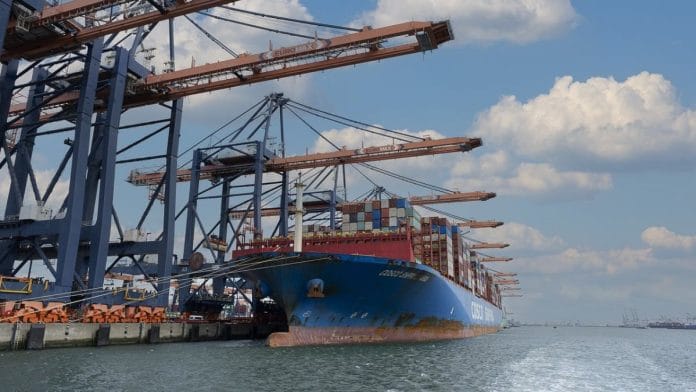Global trade growth is set to increase by more than two-fold this year, driven by low inflation and a booming US economy.
That’s according to the three major international economic organizations – the International Monetary Fund (IMF), the Organization for Economic Co-operation and Development (OECD) and the World Trade Organization (WTO) – which all forecast an uptick in global trade flows in 2024.
This prediction comes after a slowdown in 2023 due to rising interest rates, prices and stagnant demand, the Financial Times reports.
World trade is picking up again
The OECD expects global trade in goods and services to grow by 2.3% this year and 3.3% in 2025 – more than double the 1% growth seen in 2023.
The first OECD Economic Outlook in 2024, published in April, expects falling inflation will enable central banks to start lowering interest rates, but adds that real rates are likely to remain “above estimated neutral levels”.
Meanwhile, the IMF’s latest World Economic Outlook puts world trade growth at 3% and 3.3% for 2024 and 2025, respectively, despite revising down its projections from earlier in the year.
And the WTO projects world merchandise (goods) trade volumes to grow 2.6% and 3.3% in 2024 and 2025, respectively, after a significant decline last year.
What is helping to boost world trade?
The OECD’s chief economist, Clare Lombardelli, told the Financial Times that trade was growing in line with wider economic growth.
Slow but steady economic growth at 3.2% for 2024 and 2025 is predicted by the IMF in its World Economic Outlook – with a small uplift for the advanced economies but slightly lower growth in emerging and developing economies.
The IMF also predicts the world economy will see less “economic scarring” from the multiple consecutive crises of the past four years, including the trade impact of the pandemic and the war in Ukraine, which pushed up energy and food prices leading to high interest rates. The organization suggests the US economy has already overcome the impact of these trends and is exceeding its pre-pandemic performance.
The OECD’s Lombardelli expects China and East Asia to be the main drivers of global growth, as reported by the Financial Times.
While, based on exports alone, the WTO sees Africa growing faster than any other region this year – up 5.3%, if from a low base. North America (3.6%), the Middle East (3.5%) and Asia (3.4%) should all see moderate export growth, while it expects European exports to trail other regions at just 1.7%.
All three organizations are predicting a decline in headline interest rates, with the OECD expecting them to drop to around 2% for the Euro area, the US and Japan by 2025. A drop of 3.4% is expected across all member countries this year and the next.
What are the risk factors for global trade growth?
Despite the cautiously optimistic outlook delivered by the IMF, OECD and WTO, world trade is not out of the woods yet.
WTO Director-General Ngozi Okonjo-Iweala cautioned that geopolitical tensions and trade fragmentation must be mitigated to keep growth on track.
The Red Sea crisis and conflict in the Middle East are causing delays and increasing shipping costs for some sectors, the WTO says in its report. The organization also points to signs of fragmentation and a regrouping of trade along geopolitical lines.
US-China trade grew less than the two countries’ trade with the rest of the world, for example. While, since the start of the war in Ukraine, trade within blocs of politically aligned economies – roughly split into “East” and “West” – increased by 4% more than trade between them, it says.
The WTO also points to environmental risks such as the low water levels in the Panama Canal – one of the world’s main shipping arteries – adding to the geopolitical issues affecting this and another major trade channel, the Suez Canal.
International trade growth still hangs in the balance
All three organizations highlight ongoing monetary risk factors. Inflation could take longer to come down than anticipated, interest rates are likely to remain volatile and there may be a lag in impact for those tied into high interest rates for long periods, such as mortgage holders.
In the face of rising government debt, the OECD recommends prudent monetary policy – containing inflation and servicing mounting debt burdens. It also calls for a stronger policy of investment to drive long-term growth and living standards through fostering innovation and tackling climate change.
However, while developed countries can look ahead with increased optimism, the IMF warns about the deepening chasm between them and many low-income countries. Low growth and high inflation in these markets will require structural reforms to encourage domestic and international investment, alongside reducing reliance on funding, debt management and mobilizing countries’ young populations, it says.
This article previously appeared in the World Economic Forum.






